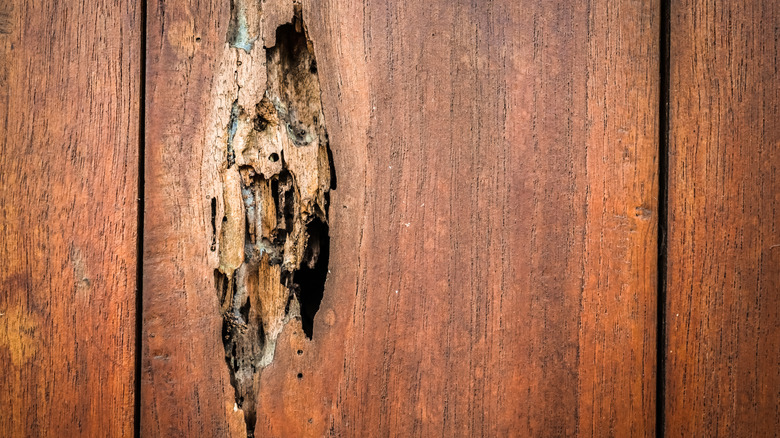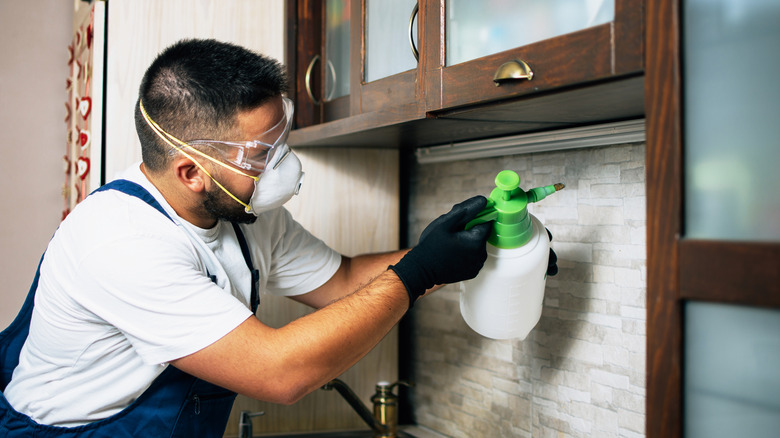How To Spot Treat Drywood Termites Using A Tool In Your Toolbox
We may receive a commission on purchases made from links.
Termites can be a homeowner's worst nightmare. These pests cause billions of dollars in structural damage each year in the U.S. Unfortunately, termite damage is not typically covered by homeowner's insurance, so if you get an infestation, it can decimate the value of your house. Unlike subterranean termites, drywood termites live in and eat (as their name implies) dry wood above ground. You may find them in the wooden parts of your house or in wooden furniture you've brought into your home. Drywood termite colonies grow more slowly than other species. While you'll probably need to call a professional if you discover subterranean termites, you can get rid of termites without tenting in some cases. Small drywood termite colonies are ideal candidates for spot treatment using an electric drill and borate insecticide.
Before you can effectively treat drywood termites, you need to find their nests. Because these wood-eating insects have small colonies, they can be difficult to find. For spot treatment to work, you need to make sure you treat the entire colony, which is often dispersed across multiple locations. Drywood termites typically live deep inside wood and rarely come out into the open unless they're disturbed by construction. Winged adults will sometimes swarm during the day in the summer and fall. They are attracted to light, clustering around windows. However, this only occurs once the termites have matured. Additionally, damage can take almost a decade to get severe enough to spot with ease.
How to locate and treat drywood termite nests
Short of seeing swarming adults, which is a long shot, one of the best ways to identify a drywood termite colony in your home is by looking for a kickout hole. These tiny openings are hard to spot since they measure less than 0.07 inches. The termites use them to push their debris out of their nests. If you find these holes, look for fecal pellets with six hexagonal sides. If they're nearby, you have an active colony on your hands. Other signs of drywood termites include the shed wings from swarming adults and feeding damage to wooden surfaces.
Once you've correctly identified the location of a nest or colony, drill a hole in the wood using a ¼- or ½-inch bit. Stop when you reach the nest. Pour or spray a borate-based insecticide such as Timbor Professional or Nisus Bora-Care Termiticide into the hole, then seal it with wood putty. If you prefer to use organic treatments, there's an oil trick that can help get rid of termites naturally. Switch out the insecticide for a concentrated citrus oil, like Orange Guard Home Pest Control with D-Limonene, and follow the same procedure. However, the results are unlikely to last long, and you may need multiple treatments to get rid of a colony.
After you've found and treated all of the drywood termite nests, take steps to protect your home from termites and stop these hungry insects from returning. Seal any cracks and crevices that could provide an entry point for insects. Keep any firewood or wooden debris well away from your house. Cover all vents and openings, such as windows and doors, with 20-mesh.

